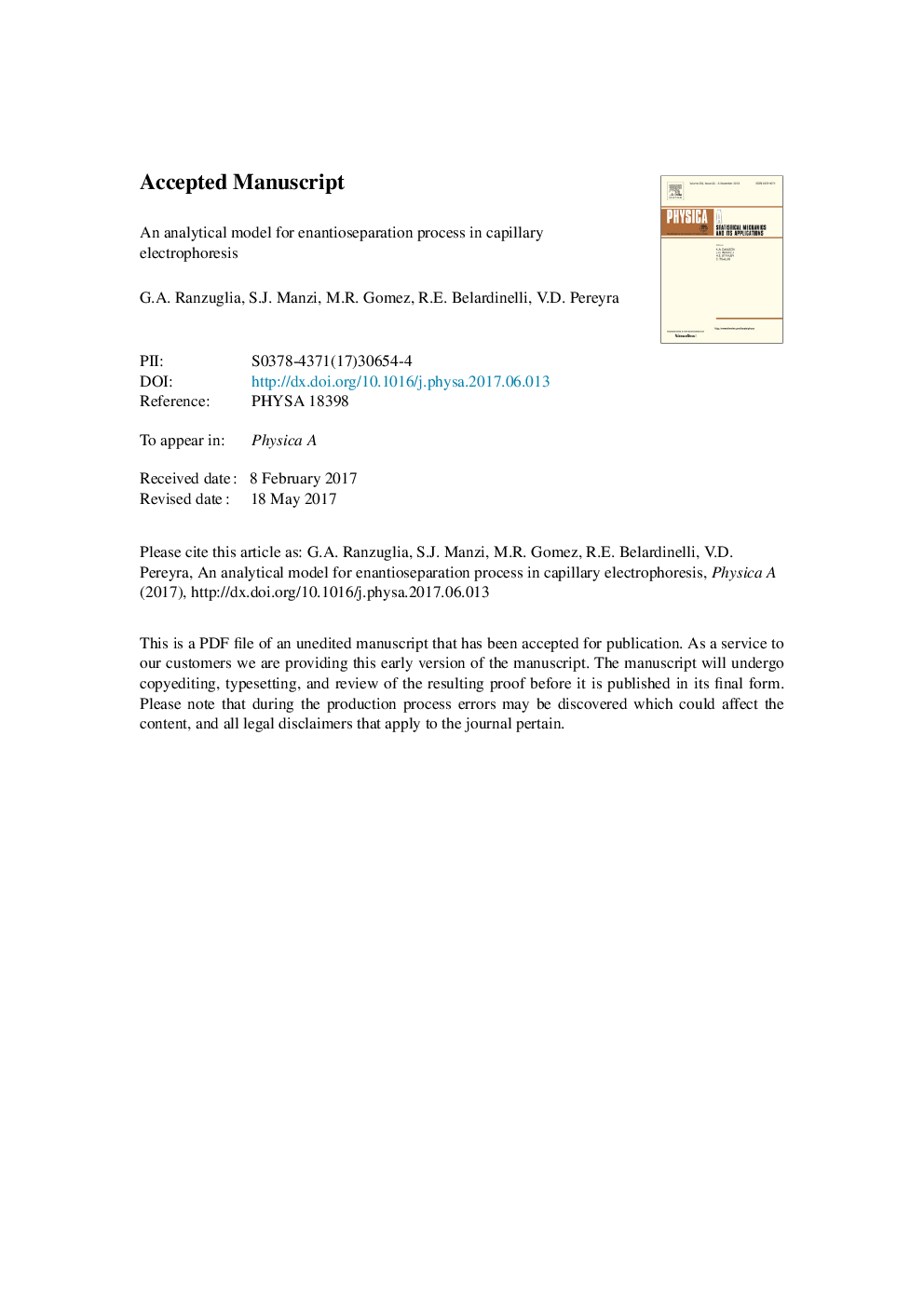| Article ID | Journal | Published Year | Pages | File Type |
|---|---|---|---|---|
| 5102543 | Physica A: Statistical Mechanics and its Applications | 2017 | 11 Pages |
Abstract
An analytical model to explain the mobilities of enantiomer binary mixture in capillary electrophoresis experiment is proposed. The model consists in a set of kinetic equations describing the evolution of the populations of molecules involved in the enantioseparation process in capillary electrophoresis (CE) is proposed. These equations take into account the asymmetric driven migration of enantiomer molecules, chiral selector and the temporary diastomeric complexes, which are the products of the reversible reaction between the enantiomers and the chiral selector. The solution of these equations gives the spatial and temporal distribution of each species in the capillary, reproducing a typical signal of the electropherogram. The mobility, μ, of each specie is obtained by the position of the maximum (main peak) of their respective distributions. Thereby, the apparent electrophoretic mobility difference, Îμ, as a function of chiral selector concentration, [C], can be measured. The behaviour of Îμ versus [C] is compared with the phenomenological model introduced by Wren and Rowe in J. Chromatography 1992, 603, 235. To test the analytical model, a capillary electrophoresis experiment for the enantiomeric separation of the (±)-chlorpheniramine β-cyclodextrin (β-CD) system is used. These data, as well as, other obtained from literature are in closed agreement with those obtained by the model. All these results are also corroborate by kinetic Monte Carlo simulation.
Related Topics
Physical Sciences and Engineering
Mathematics
Mathematical Physics
Authors
G.A. Ranzuglia, S.J. Manzi, M.R. Gomez, R.E. Belardinelli, V.D. Pereyra,
